Illinois Crop Update – August 16, 2024
Russ Higgins – Commercial Agriculture Educator
Grundy County
Soil Conditions: Moderately Dry (soil is dry, plants may be browning or stressed, water bodies are low)
Rain is in the forecast which would greatly benefit the soy crop in drier areas of Northeast Illinois, that crop is still at R5 or beginning seed. As we reach mid R5 we can expect the remobilization of nutrients from leaves and stems to start. While few reports of soy disease have been noted to date, a report of white mold in Kane County was shared this week. Most corn fields visited are now at some stage of R5 or dent stage. In lighter soils lacking rain, significant firing is evident. As our crops near maturity many farmers have turned their attention to readying combines and other harvest equipment. We can also find value in late-season scouting visits. This week has been a very interesting in corn leaf diseases; tar spot continues to infect and spread within and across fields. This is the time to evaluate fungicide application efficacy or hybrids inherent or bred tolerance to tar spot and other diseases. In addition to tar spot, symptoms of northern corn leaf blight, gray leaf spot and southern rust can be found in area corn fields. Visiting fields with disappointing weed control can also provide insight into management decisions in future years. Included is an image of waterhemp treated with a tank mix of Enlist and Liberty that killed the apical meristem but not the plant. In visiting Dr. Aaron Hager, Weed Specialist at the University of Illinois, he shared the current message for waterhemp control in soy. I had to chuckle (and could relate) at recommendation 7.
- Use glufosinate with Enlist One instead of glyphosate. If we miss grass with the tankmix, we can always come back and clean it up with glyphosate. We do NOT want to miss the waterhemp with the first application.
- Keep the water volume close to 20 gpa whenever possible.
- Be sure to use the correct spray tips; these drift reduction nozzles are terrible for contact herbicides, such as glufosinate.
- Spray small waterhemp. If the field average size is 4 inches, the reality is a field with plants ranging from 8 inches to ½ inch.
- Keep the AMS at the label recommended rate. This is NOT the place to cut costs.
- Glufosinate likes bright sunshine, high air temperatures, and high humidity. Applications made when one or more of these are missing often are somewhat compromised.
- Spray glufosinate like you once sprayed Basagran (that one resonates only with those with at least a touch of gray hair).
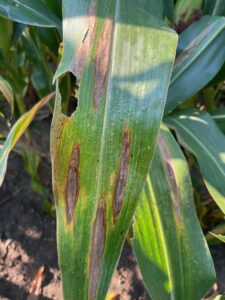
Figure 1: NCLB and tar spot 14 Aug 2024

Figure 2: Waterhemp survived post herbicide application 12 Aug 2024
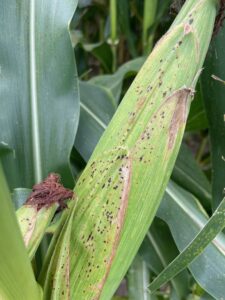
Figure 3: Tar spot on husk 14 Aug 2024
Reagan Tibbs – Commercial Agriculture Educator
Logan County
Soil Conditions: Near Normal
Crop growth remains much the same as last week. There were some pop-up showers on Monday, but these did not bring much in the way of total precipitation. Storms are in the forecast for tonight, so hopefully, there will be enough rainfall to replenish topsoil moisture. Much of the corn crop remains in the R4 to R5 stages, with the later planted corn in the R3 stage. Most of the soybeans in the area have fully developed pods, with some beginning to form seeds inside the pod.
Doug Gucker – Local Food Systems and Small Farms Educator
Dewitt, Macon, and Piatt County
Soil Conditions: Near Normal
Corn is in the dough to dent stage and generally looking good. Fields that have experienced hail after the ear formed are showing ear rots. Corn leaves tattered in every field across the area. No tar spot evident, yet. Full season Soybean are in the R4-R5 stages and plant health is good. Double crop soybeans are in bloom with small pods forming at the lower nodes.
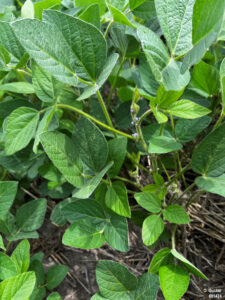
Figure 4: Double crop soybeans in bloom with small pods on lower node.

Figure 5: This field suffered hail damage after ears formed. Arrows point to hail strikes. Ear rot present. Corn in early dent – R5 stage.
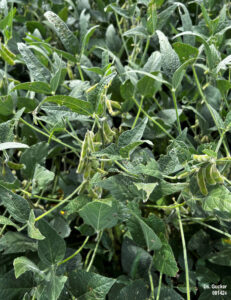
Figure 6: Full season soybean field at R5 stage.
Talon Becker – Commercial Agriculture Specialist
Douglas County
Soil Conditions: Near Normal
As we move into the later stages of grain fill, the corn and soybean crop in Douglas County is currently looking very healthy, overall. During my drive around the county, I saw very few soybean fields with drowned out areas. Soybean maturity in fields surveyed ranged from R5 (beginning seed) to R6 (full seed), with some more mature fields starting to show leaf senescence in the lower canopy. Most corn fields surveyed were in late R4 (dough) to early R5 (dent) and had full ears with minimal kernel abortion at ear tips. Soil moisture conditions were good, with drying in the top couple of inches but still plenty of plant-available moisture in the root zone.
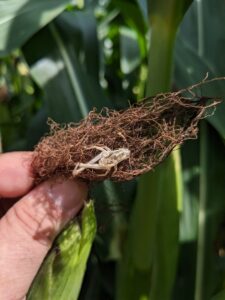
Figure 7: Molted grasshopper exoskeleton on senesced corn silks
Dane Hunter – Commercial Agricultural Specialist
St. Clair County
Soil Conditions: Near Normal
First crop soybeans range from beginning to set seed at R5 to some fields still in late R2 just starting to think about putting out pods. Double-crop soybeans are in R2, full of flowers. Some corn is full dough stage and starting to firm up kernels but not quite to R5 yet. Later planted corn is still transitioning from the blister to the milk stage, R2-R3.

Figure 8: Corn ears filling out (R2-R3) with silks still turning brown.

Figure 9: First crop soybeans fully podded and starting to set seed.

Figure 10: Double crop soybeans fully flowered at R2.





